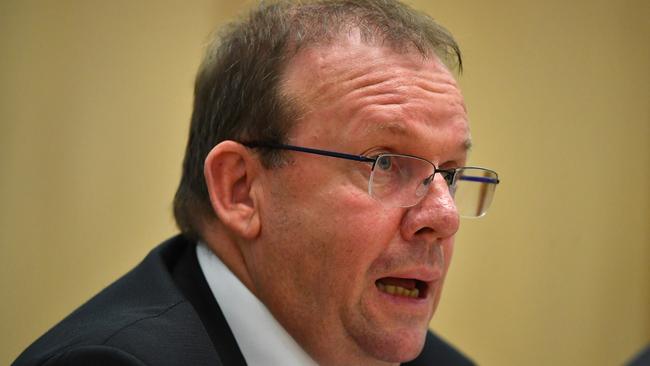Australia’s Clean Energy Finance Corporation fails to meet investment targets
$10bn Clean Energy Finance Corporation has never met government’s investment return benchmarks and has no strategy to do so.

Australia’s $10bn Clean Energy Finance Corporation has never met its government-mandated benchmarks for investment returns and has no strategy to do so within the next decade, the national audit office has found.
The Australian National Audit Office found the taxpayer-backed CEFC had always fallen short of the returns the government wanted it to meet, and it was unclear how much private funding the energy green bank had encouraged into renewable projects.
The audit report into the CEFC — established by the Gillard government in 2012 as a vehicle to drive renewable energy investment and now a key part of Scott Morrison’s emissions reduction plan — sparked calls from industry experts for the green bank to either be given more realistic investment goals or scrapped.
The ANAO concluded that the CEFC’s current seven-year rate of return was 4.75 per cent — below the 5-6 per cent rate of return mandated by the commonwealth under changes made by the Abbott government after an attempt to scrap the bank.
Auditor-General Grant Hehir found the CEFC board could not explain its failure to meet its goals and it appeared the bank did not consider it a target it had to meet.
“The CEFC monitors performance against the benchmarks, but does not have strategies in place to seek to achieve them,” said Mr Hehir’s report, published this month.
“While the board is advised of performance against the benchmark, board papers do not explain why the target benchmark rates of return were not achieved and the board has not indicated its strategy to seek to meet them.
“Instead, there appears to be an acceptance that this is simply a by-product of its investment activities and not targets that it actively needs to seek to meet.”
The latest figures released by the CEFC show it has committed $8.2bn to projects across the country, including $1bn in the past financial year, $50m of which was for the “big battery” in South Australia — the world’s largest — backed by billionaire Elon Musk.
The audit found that, while the CEFC estimated it had leveraged commitments of $24.3bn into clean energy since 2012, that included projects “where it is likely that the investments would have progressed without the CEFC’s involvement, albeit with less favourable … outcomes”.
Grattan Institute energy analyst Tony Wood said the audit raised questions about whether the CEFC should still exist and whether commercial funders needed its support any longer.
“There has ceased to be real value in the CEFC; it is neither fish nor fowl,” Mr Wood said.
“It’s not clear that the CEFC’s leveraging of additional funds is necessarily making big banks invest in renewables. It may have when it started and renewables were a riskier proposition, but now banks understand the sector.
“And since it needs to make a return — which many less mature technologies just can’t do — it exists in this middle space and it’s not clear what difference that makes.”
Britain’s Green Investment Bank, on which the CEFC was modelled, had since been sold to Macquarie, Mr Wood noted.
Green Energy Markets analyst Tristan Edis said the CEFC should only be expected to hit the current government bond rate return of 0.25 per cent given the less mature technologies in which it invested.
“It needs to be in the game of grants rather than returns, it has to be expected to lose money,” Mr Edis said.
“The way around the current issue is to set it as something closer to the bond rate, which is much lower than 5 to 6 per cent return.”
A spokesman for Energy Minister Angus Taylor said the government expected the CEFC to meet the mandated investment targets.
“The government expects the board to ensure the CEFC meets all of the requirements set out in the investment mandate direction,” Mr Taylor’s spokesman said.
Under various changes made to the CEFC’s mandate, it was unable to invest in mature technologies such as large-scale solar and wind projects for several years.
That directive was changed under previous prime minister Malcolm Turnbull, who also committed the CEFC to backing emerging technologies.
Those investments — the Clean Energy Innovation Fund — have delivered poor returns to date, losing 14.7 per cent in the first year, followed by 27.1 per cent and 6 per cent.
Those negative returns were due to writedowns in investments held by the fund, while the CEFC has warned of the risks inherent in investing in early stage technologies.
The government has also this year committed the CEFC to making funds available for hydrogen development and large-scale projects which support the recycling of waste.
Despite falling short of return targets, the CEFC had largely met its objective of increasing financing of clean energy projects, the audit office report concluded.
In a letter to Mr Hehir, CEFC chairman Steven Skala said that the green bank considered returns on individual renewable energy projects more important than the portfolio benchmark set by the government. “The portfolio benchmark return is defined in the investment mandate and then managed consistently on a portfolio basis, and it is the CEFC’s view that this is not an integral part of each individual investment decision,” Mr Skala wrote.
“Individual investment decisions more appropriately reference the relevant market-equivalent rate of return and the maximum rate that can be achieved while still ensuring the appropriate public policy outcome.”
In its response to the audit report, the CEFC noted that the current portfolio return benchmark remained “an unrealistically high return target for this market”.
The government is pursuing a controversial plan to expand the range of technologies the CEFC can invest in, with a new “technology neutral” approach allowing for it to invest in gas projects as well as carbon-capture and storage. Labor opposes those changes.
The Australian Industry Group’s climate change Adviser, Tennant Reed, said the CEFC was still useful, particularly as it continued to deliver positive returns, but he said it was only one piece of emissions reduction policy.








To join the conversation, please log in. Don't have an account? Register
Join the conversation, you are commenting as Logout